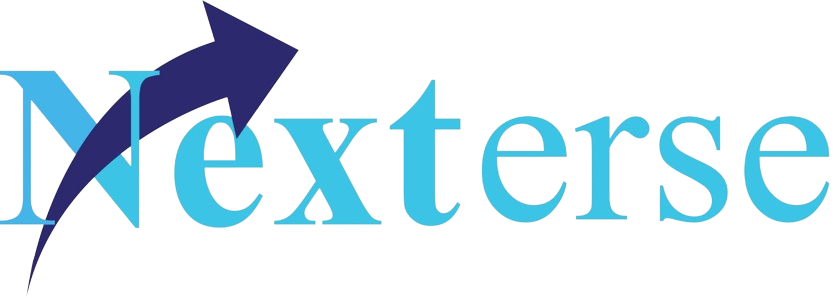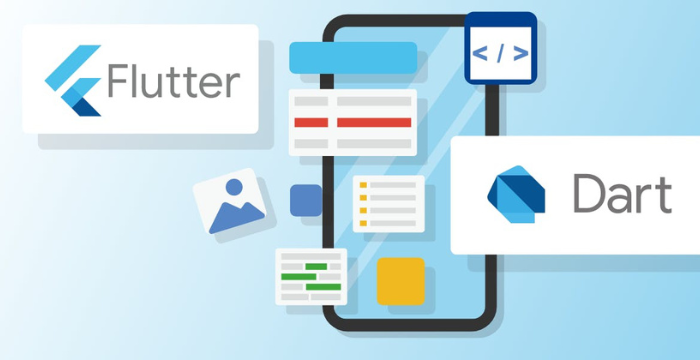Flutter Mobile application development
Introduction
Using a single codebase, Flutter is a cross-platform framework developed by Google that lets you make beautiful, expressive, and performant mobile apps for both iOS and Android. Imagine being able to create stunning animations, interactive experiences, and user interfaces while ensuring consistency across several platforms. Well, you can accomplish that using Flutter!
Flutter provides a pleasurable development experience for both inexperienced and seasoned developers. You can view changes instantaneously because to its hot reload functionality, which makes programming fun and efficient. In addition, the thriving community and vast package ecosystem guarantee that you’ll be able to solve practically any issue that comes up.
On board
It’s important to comprehend what Flutter offers before stepping foot in its realm. Using a single codebase, Flutter is a cross-platform framework that lets you create mobile apps for iOS and Android. It’s similar to possessing a magic wand that enables you to make visually stunning and consistent apps for several platforms. The Flutter SDK must be installed before you can proceed. Visit the official Flutter website, get the SDK, and adhere to the installation guidelines. After installation, you’ll have easy access to robust tools and libraries that simplify the process of developing apps. Select your tool: Visual Studio Code or Android Studio. These are both great options for developing with Flutter. Visual Studio Code is lightweight and customizable, but Android Studio offers a more sophisticated IDE experience.
Dart Programming Language
Flutter is an open-source UI software development kit for building cross-platform applications, and it is built on top of Dart. You will therefore be well-prepared for Flutter development as you dive into Dart. Dart is a client-optimized programming language that can be used to quickly create apps for any platform. Its main objective is to offer a versatile runtime environment for app frameworks along with a productive programming language for multi-platform development. Static type checking is a feature of Dart that makes that the value of a variable always matches its static type. Known by many as “sound typing,” this function aids in the early detection of type-related problems during development. Because type inference makes type annotations unnecessary, code is more understandable and concise. Because to Dart’s inherent null safety, values cannot be null unless specifically permitted.
Flutter Basics
Everything is a widget in Flutter! There are two primary sorts of widgets that make up your user interface. Stateless widgets, which represent UI elements like text labels, buttons, and icons that don’t alter dynamically, are immutable and don’t keep any internal state. Conversely, stateful widgets are used for dynamic user interface elements, such as a counter widget that increases in value when tapped, and are capable of changing their internal state over their lifespan.
Typically, a MaterialApp or CupertinoApp serves as the top-level widget, defining the application’s routes, navigation, and theme. Other widgets can be arranged in particular layouts with the aid of widgets like Stack, Row, Column, and Container. Building complicated user interfaces requires an understanding of the widget tree and how widgets nest within each other.
UI/UX
In Flutter, UI/UX design includes improving the user journey (UX) and designing aesthetically pleasing and useful interfaces (UI). In order to produce an aesthetically pleasing interface, UI designers work with layouts, buttons, icons, typography, and color schemes. To guarantee a flawless experience, UX design, on the other hand, focuses on usability, accessibility, navigation, and user happiness. By mixing widgets, efficiently handling user interactions, and maintaining state, Flutter allows for the creation of stunning user interfaces.
Creating layouts that are responsive in Flutter is essential for making your application adjust to various screen sizes and orientations. LayoutBuilder, OrientationBuilder, and media queries are used to let UI components adjust to the available space. Various devices can display your app beautifully thanks to techniques like adaptive design, limitations, and flexible layouts.
Another benefit of Flutter is customization, which lets you make unique widgets or edit pre-made ones to fit the style of your app. Employing themes makes it easier to develop unified styles for your app’s colors, fonts, and other visual elements. Consistent style is made easier by using Theme.of(context) to access theme data.
The robust animation APIs of Flutter allow for seamless transitions and enjoyable user experiences. While implicit animations (such as AnimatedOpacity and AnimatedPositioned) are ideal for basic effects, tools like AnimatedContainer, Hero, and PageRouteBuilder may produce intricate animations.
Testing
Ensuring the dependability and quality of your Flutter application requires testing and debugging. You can run a variety of checks to make sure the app remains intact. Unit tests use Flutter’s test package to concentrate on specific functions or methods in your project. Widget tests look at each widget separately to make sure it renders and functions as intended. Integration tests evaluate how various components of your program work together, assisting in the detection of problems with data flow, state management, and navigation.
Debugging calls for a variety of methods and resources. Using print statements to log helps keep track of information that is accessible in the console during development. Run flutter pub global run devtools to access Flutter DevTools, which offers insights into widget structure, memory utilization, and performance of your app through the browser. With breakpoints, you may step through code with the debugger in your IDE (like Visual Studio Code) and examine variables. You can quickly observe changes without restarting the entire application by using Hot Reload and Hot Restart. Try/catch blocks must be used to handle errors correctly, and the Flutter Inspector tool is helpful for examining the widget hierarchy and properties while the application is running.
Optimization:
Use these best practices when developing Flutter mobile applications to maximize performance. You may take advantage of the most recent optimization strategies and performance enhancements by keeping Flutter updated on a regular basis. Maintaining control over widget rebuilds is essential for a seamless user experience. Stateless widgets offer faster rendering, easier testing, and more maintainable code; utilize the shouldRebuild argument to avoid needless rebuilds. Use the Performance View in Flutter DevTools to keep track of needless widget rebuilds, and profile your app in profile mode for a more precise performance evaluation.
Smaller apps install more quickly and provide a better user experience. utilize techniques like code splitting and lazy loading to load only the portions of your application that are required, compress picture assets and utilize suitable formats (like WebP), and minimize the number of third-party libraries while removing unnecessary dependencies. Use the Hero widget for seamless screen transitions, make use of Flutter’s Animated widgets for smooth animations, and optimize animations by cutting out costly operations and layer counts.
Why Flutter?
Cross-Platform Efficiency: Flutter enables programmers to write code only once and have it run on both iOS and Android devices. The cross-platform functionality drastically cuts down on expenses and development time. Companies like the efficiency that comes from having one codebase to maintain for a variety of platforms since it makes updates easier and the user experience uniform across devices.
High Performance: By utilizing the Dart programming language, which compiles to native ARM code, Flutter’s generated code guarantees a seamless user experience. Because of the quick execution and reduced lag caused by this compilation process, Flutter apps can function on par with native apps. Because of this, Flutter is appropriate for demanding use cases like sophisticated animations, gaming, and real-time communication.
Effective Compilation: Flutter facilitates Ahead-of-Time (AOT) and Just-In-Time (JIT) compilation. With features like hot reload, which lets developers see changes instantaneously without restarting the program, JIT promotes rapid development. AOT compilation ensures great performance and efficiency in production by producing native code that is optimized for release builds.
Reduced Development Cost: Compared to creating separate native apps for iOS and Android, creating a Flutter app is less expensive. The common codebase saves businesses a great deal of money by reducing the amount of work required for testing, maintenance, and development. Because of this, Flutter is a desirable choice for businesses and startups trying to maximize their return on investment.
Quick Development with Hot Reload: Flutter’s “hot reload” function lets developers see changes right away without having to restart the application, which speeds up development cycles. Iterative development speeds up and promotes experimentation, allowing developers to add features, fix bugs, and iterate on user interface designs more quickly.
Thriving Community: The developer, designer, and contributor communities for Flutter are sizable and vibrant. This community-driven ecosystem offers libraries, plugins, and strong support to help developers find faster solutions to issues. Businesses can take advantage of the most recent developments in Flutter development thanks to the benefits of best practices, shared knowledge, and cooperative problem-solving.
Practical examples
Alibaba: Flutter is used by the popular e-commerce platform Alibaba to provide a seamless user experience and excellent performance. The streamlined transitions and intricate animations that Flutter can handle have improved the user experience when shopping.
Google Ads: With Flutter’s cross-platform capabilities, the Google Ads app offers advertisers a dependable and uniform user experience on both iOS and Android devices. As a result, managing advertising campaigns has become easier, and user satisfaction has increased overall.
Reflectly: Known for its stunning user interface and seamless user experience, Reflectly is a well-known journaling app that was developed completely in Flutter. Users who appreciate functionality and aesthetics have come to love the app because of its user-friendly interface and eye-catching design.
Hamilton: A Flutter success story, the official app for the Broadway musical “Hamilton” With a powerful and aesthetically pleasing interface, the app provides users with an immersive and interactive experience that includes access to digital lotteries, exclusive content, and show information.
Xianyu: An additional illustration of Flutter’s functionality and responsiveness is the Alibaba-owned second-hand marketplace app. The app’s success in the cutthroat e-commerce market can be attributed to its seamless handling of high volumes of transactions and user interactions.
Conclusion
In summary, Flutter has become a potent framework for creating cross-platform mobile applications. Businesses find it appealing due to its benefits, which include high performance, a beautiful user interface, cross-platform efficiency, and a vibrant community. Developers can produce aesthetically pleasing, responsive, and reasonably priced apps that appeal to a broad audience by utilizing Flutter. Flutter gives you the resources you need, regardless of your company’s size, to realize your app ideas.

